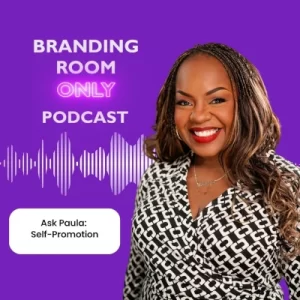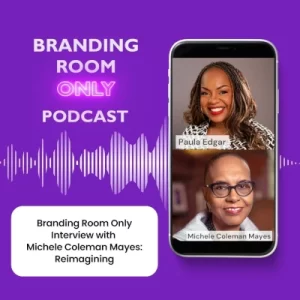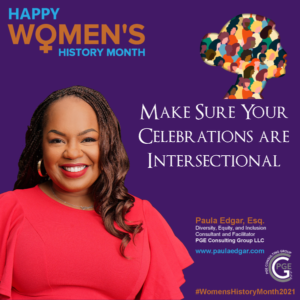Taking on the mantle of leadership is both an honor and a responsibility, as well as a challenge. For lawyers, particularly ones who are leading within a bar association, there are many things to consider in establishing your own leadership brand. For example, what do you want the theme and values of your specific leadership to be, and how does that align with the brand and values of the organization that you’re leading? There are several things to consider that may impact how this will play out.
BEFORE THE TRANSITION
For one, in the beginning, there is the transition from one leader to another. I recommend that there be an opportunity to onboard the new leader. For example, at the Metropolitan Black Bar Association (MBBA) we have a President-elect who serves a two-year term alongside the President so that they can shadow, support, and see the cadence of communication, any issues that arise, and the events of the organization. In this way, a learning process happens while they’re waiting to become the next leader.
No matter what the intention, it’s highly unlikely that any leader will solve all of the current, future or potential issues of an organization, but there are some mainstays that need to be considered. For example, what is the current leadership structure, and who are the board members and committee chairs. In any transition that is occurring, you will want to be aware of who is planning on remaining in their roles—and if they plan to remain, have they done the job that needed to be done, or is there any feedback that needs to be given as the transition to the next President takes place?
DURING THE TRANSITION
You also need to think about the current board members and how engaged they are or not. For me personally, I found as President of the MBBA it was important to connect individually with every single board member. This helped me discover their current perception of the organization and board membership, what their goals and thoughts were, and any ideas they had for the organization that could be incorporated into either my strategic plan or my interpretation of the already-outstanding strategic plan. I find many organizations and many new leaders do not survey everyone in this way. Rather, they speak to select leaders versus all of them. In my experience, however, I find that in order to have a supportive collective that provides constructive and helpful feedback, you need an understanding of what drives each member so that the collective can work together more effectively. Without this, it often becomes a one or two person-run organization.
In addition, there should be a comprehensive review of the current structure. This will assist with assessing the current state of the organization and developing a responsive strategy to incorporate during the new leader’s term. For example: What are the foundational aspects of the organization (by-laws, policies, protocols)? What is the current cadence and methodology for communication? Who are the current community partners? What is the current budget and how has it been utilized? What are the current plans for annual programming and what are some ideas for innovative and new programming that can happen during your term?
In terms of the succession piece, there should be a hand-off in some of the tasks, duties, and visibility towards the end of the outgoing leader’s term. That may mean that the President-elect leads a board meeting, speaks, or gives introductory or closing remarks on behalf of the organization as a way to show that the succession is being thoughtful and thought out, and will be as seamless as possible.
What are some other things that a new leader needs to consider? Let’s take a closer look.
SOME QUESTIONS THAT A NEW LEADER MIGHT WANT TO ASK
- What are the current terms of the board members who are leaving? What officers are planning on staying? Many times, board members tend to align with the current leader, so you’ll want to understand if standing board members are planning on staying through the shift in terms. This helps you understand what structure you’ll be coming into and plan for the spaces you have to fill.
- In the opinion of the outgoing leader, what needs to be changed and what is not working? Where are the opportunities for innovation, what should continue, or what needs to be improved? What are some things that were put off? Knowing these things will help you begin to think about what might need to be implemented.
- Were there any deep challenges that are still underlying (a rumbling among the board members, within the organization, or the members)? You’ll want to get as much information as possible so you can get ahead of any possible roadblocks.
- Is the current membership structure working? Has the number of members increased, stayed the same, or decreased? If so, why? You will need to understand both the current numbers, any attrition, and also what member outreach strategies have been successful in the past.
- What structures are in place for helping the current leader make decisions and to help with the executing of opportunities and the voice of the organization? For example, if the organization is asked to opine on something public that is legally related, what is the current process for reviewing those instances, and has that process been documented and voiced to the current board members?
- Is there a plan to hold a retreat for the board so they have an understanding of what your plan is as a leader for incoming and returning board members? Has there been an understanding of what is staying the same and what might be new? How will people be held accountable if they don’t do what they have signed up to do? Are their dues current? If not, has that been addressed?
- Do you have an understanding of the calendar? When should the installation for board members and the President happen? What is the cadence for membership meetings? When does voting occur?
- Who are the current mainstays in terms of sponsors and community collaborators? What is the plan for introducing those stakeholders to the new incoming President? If there’s not a plan, when can one be made?
- Is there an understanding of the current officers and how they are going to transition to the new officers? Are there developed standard operating processes for officer functions? Is each officer producing a closeout transition memo?
- Will there be meetings incorporated in order to make sure the leadership handoff happens properly? Planning and incorporating handoff meetings and retreats into the leadership transition process is an integral part of understanding and maintaining operations.
- Is the outgoing President understanding and willing to be available for a certain amount of time in the event that there is some transition information that has not been communicated and may need to be managed? Agreeing to a set transition timeframe and maintaining open communication is helpful for facilitating a smooth transition and sustaining organizational continuity.
- What’s the current method and cadence for board meetings? Does that cadence work? Should it be reviewed and revised? Is there a schedule and have the meetings already been added to the calendar?
- Who will be communicating, and how will communication happen? Who will provide the voice for the organization? What are the methods of communication and who manages them (i.e. website, newsletter, social media, etc.)?
Those are just some of the things that should be thought about when it comes to establishing structure, accountability, and succession.
AT THE END OF THE TRANSITION
I also think it makes sense to have a close-out meeting between the leaders where you not only ask those logistical questions but some personal ones such as: What do you wish you had done differently? What do you believe were some of your successes? What were some of your main challenges and why did they occur? Do you think that I’ll still have some of those same challenges?
As you move into your leadership position, reflect on these questions and any other issues of consideration you believe should be addressed.
All Rights Reserved PGE Consulting Group LLC 2022 | Reprint permission requests to [email protected]





